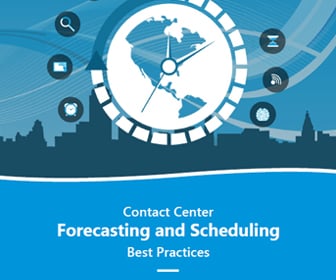Workforce Management Featured Article
More 'Big Data' Analytics Are Being Used for People-Related Processes
Many companies have been using analytics for years – even before the term “big data” became popular – but traditionally, data crunching to improve efficiency has been used largely on processes, not on people. But with the spectacular results from using analytics showing up in manufacturing, distribution, the customer experience and elsewhere, many companies are taking analytics solutions for human workforces more seriously.
A recent report by IDC (News - Alert) Government Insights entitled, “Business Strategy: U.S. Federal Government -- Accelerating the Pace of Change in Deploying Big Data and Analytics” found that using big data for people-related processes is now the second most common use for business analytics solutions. While 55 percent of responding companies indicated they use analytics for operations, workforce applications came in second at 23.3 percent. (Financial applications placed third in importance, at 21 percent.)
The analytics technology are beginning to show up in workforce management solutions, helping companies ensure they have the right talent in the right place at the right time. These solutions, bolstered by analytics, can also ensure that organizations are ready to hire in the future, according to the report. While the report applies to government agencies, the knowledge is shareable across all industries and organizations, both public and private. It’s simply in a company or agency’s best interest to evolve their “big data” processes, software and personnel.
Today, some workforce management solutions are offering desktop analytics modules to help contact centers get the most out of their manpower. These solutions can automatically collect activity and application data and track business objects across time and multiple users while comparing key metrics against a defined business workflow to help contact center managers understand when the workforce isn’t being utilized to optimum levels. This includes monitoring and measuring performance and tracking work tasks such as sales orders, support issues, claims, work orders, and others across multi-step processes throughout your organization.
Analytics modules such as those offered by Monet Software help managers to easily track, analyze and manage agent, group and center performance to optimize call center performance. Unified call analytics – across the entire contact center universe -- monitor and analyze key performance metrics in an understandable and highly usable way, resulting in better support in decision making for managers and supervisors. Some solutions are even user-friendly for agents themselves, allowing workers to check their performance and self-manage or improve themselves by consulting with coaches and supervisors. Automated data aggregation and reporting frees up time for managers (leaving them more time to actually manage) and allows them to focus on working with agents, coaching, training and planning, instead of the onerous job of collecting data that may (or may not) mean anything to workforce operations.
While “big data” technologies are complex (hence the “big”), a great analytics solution for the workforce will distill the analytics process down to only what users require, and will put it on the desktop in a way that is graphically easy to understand. With a unified view of key performance metrics, managers are quite simply better positioned to make smart workforce management decisions.
Edited by Stefania Viscusi







